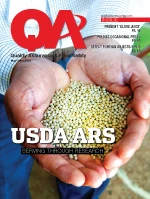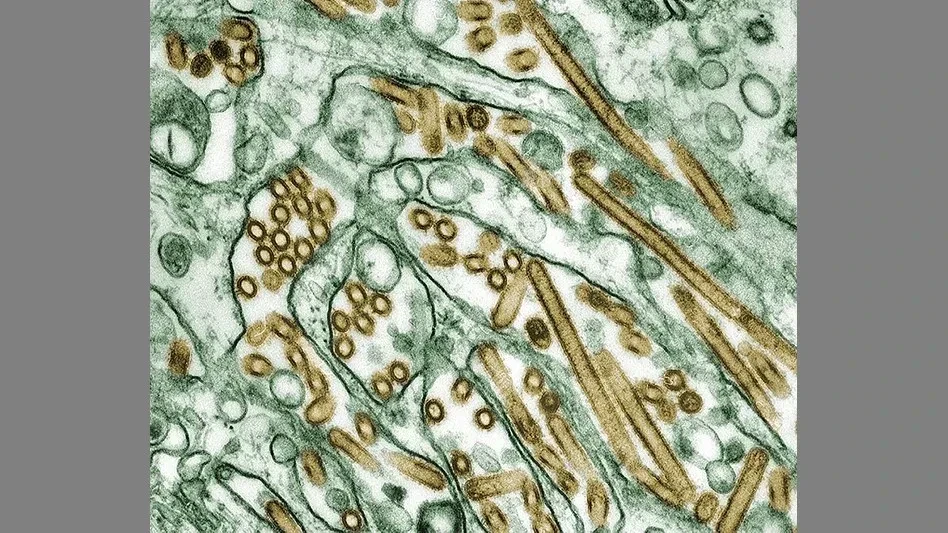The Agricultural Research Service (ARS) is the U.S. Department of Agriculture's chief scientific in-house research agency. Its job is to find solutions to agricultural problems that affect Americans every day, from field to table. Its mission is to conduct research to develop and transfer solutions to agricultural problems of high national priority and provide information access and dissemination. ARS is one of four agencies in USDA's Research, Education, and Economics (REE) mission area. The others are National Institute of Food and Agriculture (NIFA), Economic Research Service (ERS), and National Agricultural Statistics Service (NASS). As an REE agency, ARS' annual budget is established by Congress based on the President's proposed budget and research priorities.
ARS has:
- about 800 research projects within 18 National Programs.
- 2,200 scientists and post doctorates.
- 6,200 other employees.
- 2012 fiscal year budget of about $1.1 billion.
- 90+ research locations, including overseas laboratories.
In addition,
- Each research project is a part of one or more of 18 ARS National Research Programs. These programs are planned in consultation with people inside and outside ARS to ensure that the programs are relevant to priority needs.
- ARS scientists frequently collaborate with research partners from universities, companies, other organizations, and other countries.
- In designing and organizing its research efforts, ARS listens and responds to those with a stake in the outcome.
- Its strategic plan is developed to meet stakeholders' needs and support USDA's mission, with progress continually checked against the plan, and modifications made as circumstances require.
- ARS publishes Agricultural Research science magazine 10 times a year in print and electronic format.
More information is available at http://www.ars.usda.gov/aboutus/aboutus.htm.
The magazine is available at http://www.ars.usda.gov/is/AR/
BARC Facts
In 1910, USDA’s purchase of the Walnut Grange plantation in Beltsville marked the beginning of the Beltsville Agricultural Research Center (BARC). Surrounding land and buildings were later purchased to house more research laboratories, and the experimental farms and research locations were moved to Beltsville.
Large-scale expansion began in the 1930s, during the Great Depression, when then-Secretary of Agriculture Henry Wallace believed that research was the best way to advance agriculture and preserve the environment.
Many government agencies began as part of USDA in Beltsville, including the FDA, EPA, U.S. Geological Survey, and the USDA Forest Service. Other agencies, including NASA, the Department of Commerce, and the Office of Naval Research, also conducted research projects at Beltsville.
BARC now sits on about 7,000 acres, primarily because of its parasitic livestock research. As the largest, most diversified agricultural research complex in the world, it is considered to be a world leader in agricultural research.
Today BARC houses 500 buildings (including barns, animal facilities, and green houses and laboratories) of which Building 167, the "Dairy Barn" built in 1913 was the first building at Beltsville and is the site of the first research activity.
Some of its major discoveries include:
- 1920s – extended the short shelf life of butter by showing that use of pasteurized sweet cream instead of sour ripened cream helped it last longer.
- 1930s – produced the first successful vaccine to immunize cattle against brucellosis, a serious disease that causes high incidences of abortions, among other effects.
- 1950s – scientists release a steady stream of new varieties of fruits and vegetables with enhanced disease resistance, better flavor, and other desirable traits.
- 1960s – the first computerized near-infrared spectrophotometer is developed as a noninvasive technique to measure food traits without destroying the sample.
- 1990s – scientists discover a fungus that inhibits a deadly disease on cacao trees. This finding could help save the $8.6 billion U.S. chocolate industry.
- 2000s – researchers develop the first transgenic cow with resistance to mastitis, a disease that destroys milk-secreting cells and costs U.S. dairy farmers about $1.7 billion annually.
See more BARC discoveries and inventions at http://www.ars.usda.gov/is/AR/archive/apr1/research0410.htm?pf=1.

Explore the June 2012 Issue
Check out more from this issue and find your next story to read.
Latest from Quality Assurance & Food Safety
- Nestlé Opens Arizona Beverage Factory and Distribution Center
- Ingredion Invests $100 Million in Indianapolis Plant to Improve Efficiency, Enable Texture Solutions Growth
- Eagle Unveils Redesigned Pipeline X-ray System
- USDA Invests Up To $1 Billion to Combat Avian Flu, Reduce Egg Prices
- Washington Cats Confirmed with HPAI as Investigation into Contaminated Pet Food Continues
- USDA Confirms Bird Flu Detected in Rats in Riverside
- Kyle Diamantas Named FDA’s Acting Deputy Commissioner for Human Foods
- QA Exclusive: Food Safety Leaders React to Jim Jones’ Departure, FDA Layoffs





